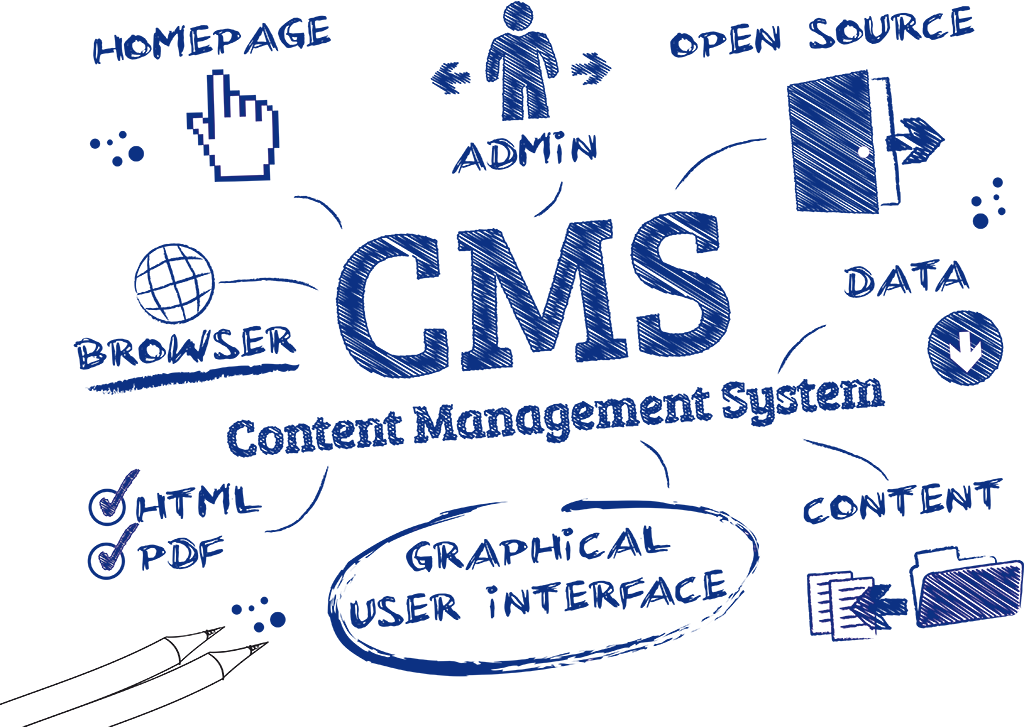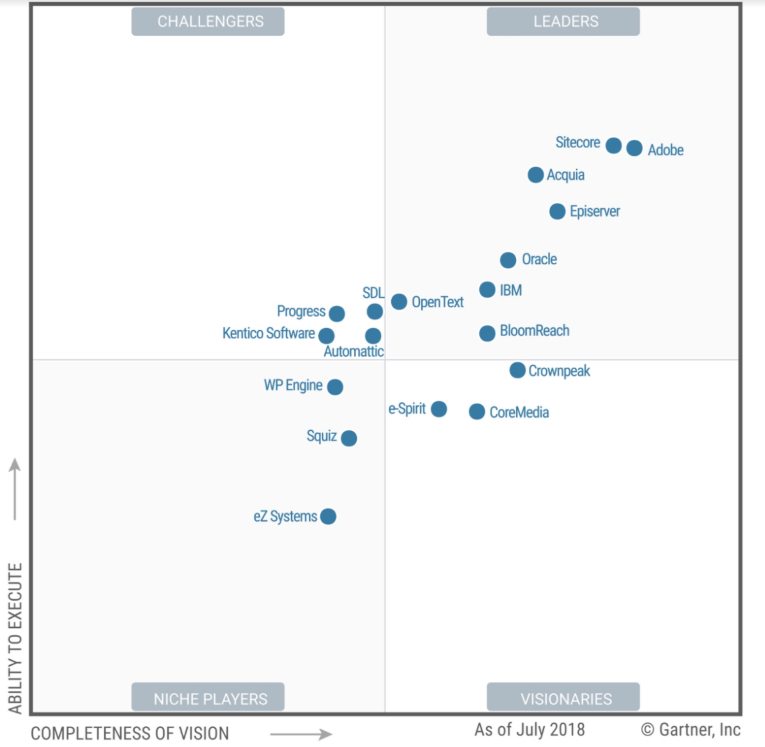Three criteria for selecting the right enterprise CMS
With so many choices, how do you select the right CMS? We identify three criteria.

The Options
The Gartner Quadrant is the gold standard for Web Content Management Systems (CMS). The 2018 quadrant is shown below:

This quadrant pretty much defines the options for enterprise CMS products.
Price and Budgets
All these products charge a combination of upfront and annual fees. Typically costs will range from tens of thousands to hundreds of thousands annually. The only exceptions are the following:
- Acquia is a paid-product but the CMS that it runs is Drupal (which is free)
- WP Engine is a paid-product but the CMS that it runs is WordPress (which is free)
- Finally, Automattic is the software company behind WordPress (free) and it offers other paid products
Digital Experience Platforms
Websites do a lot of heavy-lift in terms of communicating the brand, driving leads, retaining and growing customers. To accomplish these goals, they operate within an ecosystem of products that are grouped under the “Digital Experience” umbrella. The typical products here are:
- Asset Management
- Rich Media Management
- E-commerce
- Analytics
- Personalization
- Audience Management
- Advertising
- Marketing Automation for Email, Display and Campaigns
There are two broad options here: Best-in-Class-Suite or an Integrated-Marketing-Cloud. In the first approach, the website is integrated with best in class products that are not offered by the same vendor. An Integrated Marketing Cloud approach is one where some or all of the products are offered by the same vendor. The trade-off here is primarily between functionality vs. cost-of-integration.
Programming Language
This is a major criteria when selecting CMS products. Typically enterprises have strong preferences because of prior technology investments throughout the organization. Most enterprise websites have deep integrations into other systems such as e-commerce, marketing automation and order management. So, they don’t want the website to operate in isolation.
There are three programming languages that all these CMS products are built on: Java, .NET and PHP.

After you get past these choices, there are a whole host of next-level choices to be made: functionalities, roadmap, community, ecosystem, security, devops and many others. But, these three criteria are the big ones.
At our firm, we work on many of these platforms and if you’d like to learn more, go here for Automattic/WordPress, Acquia/Drupal, Adobe Experience Manager (AEM) and Kentico. For a detailed comparison of AEM and Bloomreach, click here. We also compared Acquia and WP Engine from a Devops perspective here.